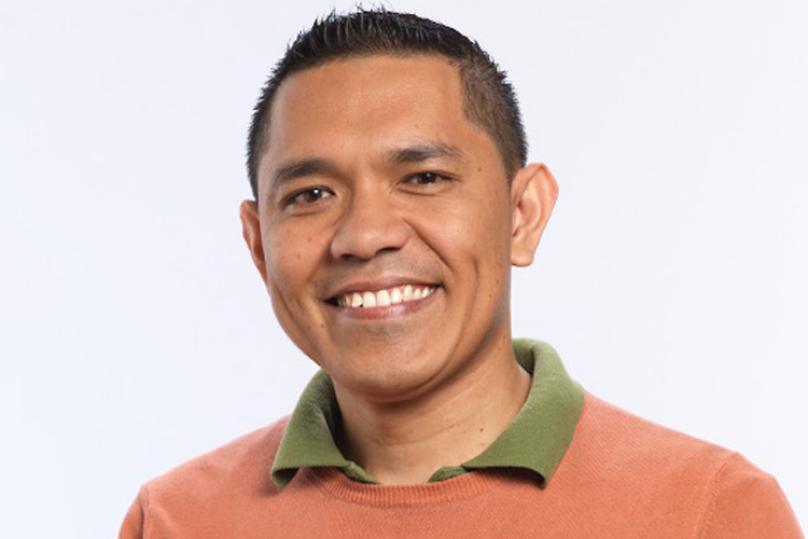
By MƒA Master Teacher Cesar Ebonia
As a teacher with 24 years of experience in mathematics education, I have learned that change is the only constant, and that we never stop learning and must always evolve to meet the needs of our changing environments and students.
I can still remember my first year of teaching. I prepared my lessons looking at different textbooks to see varied presentations of a topic, put them together, and considered it my style of teaching. I recall using little index cards to help me remember the flow of the lesson during the presentation. I can hear the white chalk scraping the blackboard and smell the mustiness of students’ textbooks, which were my main equipment for teaching. I can recall burning the midnight oil just to grade and analyze results for an assessment. Today, the chalkboard has been replaced with a Smartboard, index cards are new remote clickers, and red pens are now online assessments that capture and analyze results in minutes.
For two decades I taught in a more traditional way, but lately I have been taking a journey through a Blended Learning classroom. Earlier in my career, I had never anticipated that it would be possible for teaching and learning to happen if the teacher is not at the front of the classroom. Now this is my fourth year using a blended learning model in my math classroom. It all started because attendance had been so inconsistent that I felt it was a challenge to work with different groups of students with significantly diverse needs and skills gaps. Continuing a regular lesson seemed impossible. I tried video recording all of my lessons so that when students were absent they could have a way of catching up on the lesson. I got this inspiring idea from one of the courses I attended at MƒA, “How to Create Videos for Flipping a Class.” The two MƒA teacher facilitators, Ricardo Estrada and Stephanie Bohbot shared how they use their self-created video lessons in their classrooms. It was amazing to see their creativity and resourcefulness in how they structured their Flipped Classroom, which opened my mind to envision the same and implement according to the needs of my students.
I continued looking for other resources in order to organize and provide an interactive learning experience as my students worked independently on the computer. I took an online class on the ABC’s of Blending Learning to equip me to carry out the technique in the classroom.
With the blended learning classroom, now I am mostly seated at the back of the classroom looking at my computer to check on the progress of every single student that works on different things at the same time through their computers. I can now address, in real time, their misconceptions and particular needs, working one-on-one with them using live data.
Using a Learning Management System through Schoology.com has helped me organize the lesson and the resources that I want my students to learn. Epuzzle.com plays a very important role in making my personal video recorded lesson interactive and also giving students accountability in watching the lesson diligently, as they are not allowed to skip parts of the video. This allows me to check students’ understanding and work through their challenges in real-time.
The structure I put in place is a modified version of all the Models of Blended Learning, as fully embracing it was not practical for my classroom. I made my own structure and routines in the classroom as it serves the needs of my students. As a transfer high school teacher, I could not actualize many of the suggested models since classroom attendance varies. I also cannot pre-assign video lessons since students aren’t able to complete homework, as they have personal, emotional, and social issues that they need to attend to.
I understood that there were risks I needed to face when I made a decision to start a Blended Learning Classroom. Time was a primary risk since the preparation of resources requires a lot of my time. I have spent a lot of late nights recording my lessons and days at conferences and professional development sessions to learn more on Blended Learning – and to connect with and learn from other MƒA teachers who have a Blended Learning classroom. Blended Learning also means dealing with real-time issues: the internet is not working, the video is not playing, students can’t access their accounts because they forgot their usernames and passwords, and the like. Lastly, my pedagogical comfort is also at risk since this style sometimes takes me away from my teaching comfort zone.
The benefits of Blended Learning overpower all the risks I took. Students are more engaged and accountable of their own learning. Students are empowered to own their learning, moving at their own pace.
If you decide to take this journey, ask yourself the following questions:
- What is my purpose?
- Do I have the resources and tools?
- What structure should I execute?
- Am I willing to take the risk?
Let us empower our students to be self-learners within a Blended Learning environment.
